Awarded one of the FabricLink Network’s Top 10 Textile Innovation Awards for 2019, a promising innovation by Bolt Threads is a new sustainable leather solution. The new organic fabric is grown from the filament-based root structure of mushrooms, mycelium. Bolt Threads’ mushroom root-based Mylo material looks and feels like soft and supple leather.
The Root of The Leather Problem
Leather has been part of our textile supply chain for centuries. Paintings and artifacts in Egyptian tombs indicate leather was a present material even in 5000 BC hundreds of years ago. When indigenous communities lived off of the natural land, animals were hunted for food and their hides used for shelter, transport, and wearable warmth in winter. The spread of industrialisation in the 18th and 19th centuries increased its demand. And the modern manufacturing technology of the 20th century has solidified its popularity and established it as a staple material in almost every product category.
But the status of leather as a “sustainable” textile is persistently debatable in the eco-fashion community. Foes argue that animal products are neither ethical nor eco-friendly thoughtful. Animal lover or not, it’s hard to disprove the livestock industry’s culpability in global deforestation and global warming. Still, as long as the meat is on our plates, friends of the material argued that it’s preferable to use the remnant skins of animals in clothing instead of wasting it. Moreover, leather goods are known to be treasured and last a long time. They are an investment textile, leather is not exactly fast fashion.

As an alternative and a cheaper one at that, faux leather was developed out of synthetic plastic polymers and/or rubbers and oils. But its production can be harmful, jeopardising the health of the humans who make it, and the environment. It also doesn’t biodegrade, whereas an animal skin jacket might decompose back into the earth as it’s from organic textiles. Although this argument is perhaps void when one considers that leather is treated and coated heavily with likely unsafe materials. Also, the production of natural leather requires lamentably huge amounts of water.
The Root of The Leather Solution
With leather’s future in question, as the consequences of an expanding meat and leather fashion industry show themselves rather clearly, new origins of leather-like material have surprised the textile sourcing world. Such innovations include pineapple leather and cactus leather. And now, the celebrated textile innovation and material solutions company Bolt Threads has realised and invented a solution made of mushrooms.
Actually, it’s made of mushroom root or mycelium. Mycelium grows in a forest’s soil. Its growth structure entails a vast network of tiny threads, fine white filaments, that interweave and self-assemble themselves into “a 3D matrix that can spread for miles” according to Bolt Threads. This root current helps recycle organic matter on the forest floor into nutrients for plants and trees.


Mushroom leaves
It’s called Mylo, and it is grown on renewable, organic matter. Bolt Threads precisely controls growth conditions like temperature and humidity to encourage the mycelium to grow upward and assemble into an organised mat of interconnected cells. The careful control of its environment allows Bolt Threads to manipulate the mycelium’s growth and control the final material’s properties including thickness, shape, and more. The final product is created by combining mycelium cells with a substrate of corn stalks and nutrients. Within about 10 days, the cells grow into the substrate, which can be cut into almost any size.
The material looks like hand-crafted leather and shares leather’s warm touch and suppleness. It’s durable and abrasion-resistant and said to have better moisture management properties than synthetic leathers. But unlike animal leather, it can be produced in days or weeks, compared to the years and resources required to grow and obtain sources of animal hide. Thus further lessening environmental impact. Additionally, it requires none of the toxic chemicals used in the making of synthetic leathers with polyurethane or PVC coatings. Bolt Threads also avoids toxic solvents like DMF (dimethylformamide).

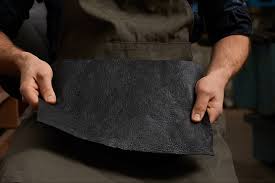
Canal Towards Change
This may well be a promising alternative to leather, and an exciting option for eco- or animal conscious shoppers.
In 2018, sustainability-minded and leather-eschewing fashion designer Stella McCartney produced a prototype of her iconic Falabella bag out of Mylo. It premiered at the “Fashioned from Nature” exhibit at London’s Victoria & Albert Museum as an example of the potential eco-conscious future of high fashion, luxury leather goods. McCartney also collaborated with Bolt Threads for the launch of their first fabric revolution, a spider silk Microsilk, which debuted in 2017.
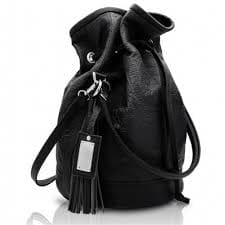
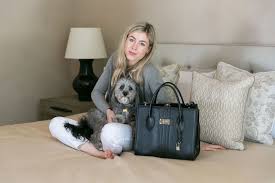
Bolt Threads has made noteworthy strides by using proteins already existing in nature to create fibres and fabrics with both practical and revolutionary uses. They aim for fabrics to be consistently high quality yet more biodegradable and harmlessly replicable.
Their fabrics are all-natural, grown to order, and use substantially fewer resources than traditional textiles.
We hope to see more of these sustainable fabrics and natural textiles in use by apparel manufacturers and designers of sustainable fashion. As well as their extensive presence in trade shows in the united stated and the rest of the world.
Major brands back Mylo mushroom leather
Adidas, Kering, lululemon, and Stella McCartney are the major brand names in the consortium which has secured exclusive access to Mylo – a unique new material made from infinitely renewable mycelium which looks and feels like leather, developed by biotechnology company Bolt Threads, of Emeryville, California.
These brands will begin bringing products featuring Mylo to market in 2021, following what is the largest joint development agreement in consumer biomaterials to date.


Made from infinitely renewable mycelium – the branching underground structure of mushrooms – Mylo is created using a highly efficient growing process that is intentionally designed to be low impact, taking less than two weeks to grow, emitting fewer greenhouse gases and using less water and resources than animal leather.
We start by reproducing what happens on the forest floor in a controlled indoor environment, Bolt Threads explains on the Mylo website. We take spores of mycelia cells and feed them sawdust and organic material, and place all of that on a square mat while controlling the humidity and temperature. The mycelium grows into a foamy layer — imagine a big bag of smushed marshmallows. Once the mycelium is harvested, we compost the leftover byproducts. We then process and dye that sheet of mycelium and it becomes the Mylo that gets used to make footwear, handbags, wallets, phone cases, and other gorgeous products, Bolt says.
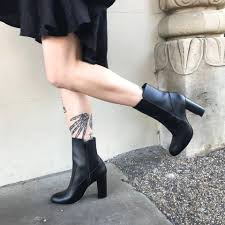
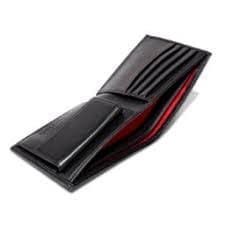


“Many people associate leather with luxury but since the beginning I always wanted to approach things in a different way because killing animals for the sake of fashion is quite simply not acceptable,” said Stella McCartney. “Working so closely with Bolt Threads since 2017 has been a career changing experience and I cannot wait to launch Mylo products in 2021.”
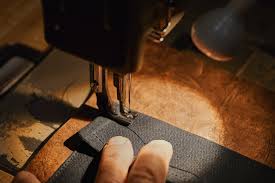
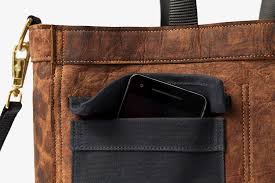
Consortium partners were drawn to Mylo because of its remarkable resemblance to soft, supple leather. It can be used like animal or synthetic leather and can take on any colour, finish or emboss.
“For too long the industry standard has categorised materials as either natural or highly functional, but not both,” said James Carnes, VP of global brand strategy at adidas. “The way to remedy this is to innovate responsibly with solutions that challenge the status quo, and products that use the best of what nature has spent millions of years perfecting – like Mylo – are critical to that.”
‘It Could Change Everything’
In an email, Francois Henri-Pinault, Kering’s chief executive, wrote that luxury companies (which have far larger profit margins than affordably priced retailers) had a responsibility to lead the way in the fashion and textile industry, both creatively but also by investing in the innovation that would drastically reduce emissions in its supply chain.
“Mylo is one of the very promising solutions that we have identified,” he said. Kering, however, declined to say when it would start selling Mylo products, or via which brand in its portfolio of names, which includes Gucci and Saint Laurent. Until 2018, it also included Stella McCartney, a designer who built her brand on her longtime commitment to sustainability.
But in 2019, a year after exiting her partnership with Kering, Ms. McCartney joined Kering’s archrival, LVMH Moët Hennessy Louis Vuitton. As a result, the two conglomerates were assumed to be in an arms race for the “greenest group” accolade — though this partnership suggests that might not be quite accurate. Ahead of her Paris Fashion Week runway show next week, Ms. McCartney said that she believed “this Mylo technology will change everything.”

Possibly. But not many shoppers can afford designer wares from Gucci and Ms. McCartney. And even after Mylo production ramps up, mushroom leather will remain a tiny fraction of the industry’s total output. Which is why the participation of sportswear giants like Adidas and Lululemon makes the deal more interesting. Details of what they will do with Mylo, however, remain largely under wraps.
Sun Choe, Lululemon’s chief product officer, said Mylo would be found across its accessories and equipment lines in a “variety of applications” from 2021, adding that the company had never before formed an alliance with rival brands of this nature.
James Carnes, vice president of global strategy at Adidas, said they planned to develop a classic Adidas lifestyle sneaker made of Mylo next year, at a slightly higher price point than previous versions and in smaller quantities, in order to maximize demand and explain the product to consumers. Then, the plan would be to pump up production levels, once consumers had time to compare the aesthetic and performance of the new Mylo shoe with what had come before.
“We need to change the competitive aspect of this part of the industry,” he said, noting that he believed working with competitor brands would only become more commonplace in the future. “We can be competitive in areas such as design and creativity, and not in areas like cutting our impact on the planet when there is still no single silver bullet to the climate crisis,” he said.
Reference-
https://www.fibre2fashion.com/industry-article/8749/rooted-in-nature-mylo-mushroom-leather
https://www.synzenbe.com/blog/rooted-in-nature-mylo-mushroom-leather-1000/999
https://www.innovationintextiles.com/major-brands-back-mylo-mushroom-leather/
https://www.nytimes.com/2020/10/02/fashion/mylo-mushroom-leather-adidas-stella-mccartney.
By Nidhi Singh

